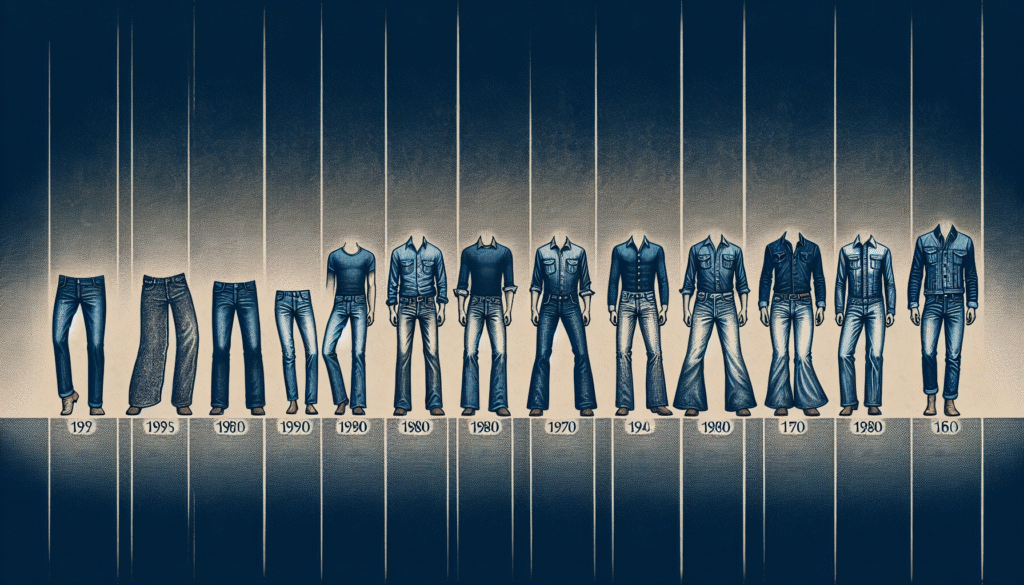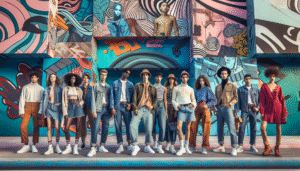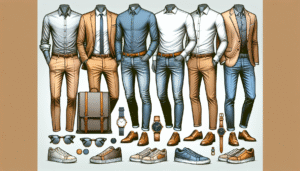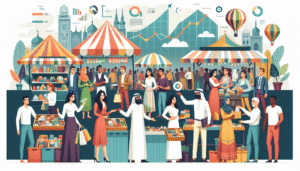
From Workwear to Wardrobe Staple: The Journey of Denim
Early Origins: Nîmes and Genoa – A Tale of Two Cities
The history of denim is interwoven with the stories of two European cities: Nîmes, France, and Genoa, Italy. In Nîmes, a sturdy serge fabric called “serge de Nîmes” (meaning “serge from Nîmes”) was produced. This hard-wearing material, later shortened to “denim,” became renowned for its durability. Meanwhile, in Genoa, sailors wore trousers made from a cotton corduroy called “fustian,” known for its strength and resistance to the elements. This Genoese fabric, called “Gênes” (French for Genoa), eventually evolved into “jeans,” the garment we know and love today. Although denim and jeans initially existed separately, their paths were destined to intertwine.
19th Century America: The Gold Rush and the Birth of Modern Jeans
The California Gold Rush of 1849 marked a significant turning point for denim. Prospectors needed robust clothing that could withstand the rigors of mining. Levi Strauss, a Bavarian immigrant, saw this need and, partnering with tailor Jacob Davis, patented riveted work pants in 1873. These pants, crafted from durable copper-riveted denim, offered unparalleled strength and quickly became popular amongst miners. This marked the birth of the modern jean, initially known as “waist overalls,” a garment designed for functionality above all else.
Early 20th Century: From Workwear to Western Wear
While jeans remained primarily workwear in the early 20th century, their association with the rugged American West began to emerge. Western film stars like John Paul Wayne and Gary Cooper popularized denim on the silver screen, imbuing it with a sense of adventure and rebellion. This exposure broadened denim’s appeal beyond laborers, attracting a new generation of wearers who appreciated its durability and burgeoning cool factor. Dude ranches and Western-themed holidays further cemented the connection between denim and the American West, transforming workwear into a symbol of Americana.
Mid-20th Century: The Rise of Denim as a Symbol of Rebellion
The 1950s witnessed denim’s transformation into a symbol of teenage rebellion. Icons like James Dean and Marlon Brando embraced jeans in their films, solidifying their association with youthful defiance. This era saw the rise of denim as a counter-culture statement, challenging the conservative dress codes of the time. Schools even banned jeans, further fueling their rebellious allure and solidifying their place in youth culture.
The 1960s and 70s: Denim’s Cultural Revolution
The 1960s and 70s ushered in an era of denim customization and self-expression. Tie-dye, embroidery, patches, and embellishments became common, reflecting the individualistic spirit of the times. Denim also became a canvas for political statements and social activism, further solidifying its role as a cultural artifact. The rise of designer jeans in the 1970s marked a turning point, transforming denim from a purely utilitarian garment to a high-fashion item. Brands like Calvin Klein and Jordache elevated denim’s status, making it a symbol of luxury and style.
The 1980s and 90s: Denim Diversification and Global Domination
The 1980s saw the diversification of denim styles. Acid wash, stonewash, and ripped jeans became popular, reflecting the decade’s bold fashion trends. The rise of hip-hop culture further cemented denim’s place in popular culture, with artists embracing baggy jeans and denim jackets as part of their signature style. By the 1990s, denim had achieved global domination, becoming a ubiquitous wardrobe staple across cultures and demographics. Grunge fashion further popularized distressed denim, solidifying its versatility and enduring appeal.
The 21st Century: Innovation and Sustainability
The 21st century has witnessed a focus on innovation and sustainability within the denim industry. New technologies like laser finishing and ozone washing have reduced the environmental impact of denim production. Brands are increasingly incorporating recycled materials and adopting ethical manufacturing practices. The rise of premium denim brands further emphasizes quality and craftsmanship, showcasing denim’s versatility and enduring appeal. Skinny jeans, jeggings, and other contemporary styles reflect the ever-evolving nature of denim fashion.
Denim Today: A Timeless Classic
From its humble beginnings as workwear to its current status as a global fashion icon, denim’s journey is a testament to its adaptability and enduring appeal. Its rich history, intertwined with cultural shifts and technological advancements, positions it as a truly timeless classic. The ongoing focus on sustainability and innovation ensures that denim will continue to evolve, remaining a wardrobe staple for generations to come. From high fashion runways to everyday street style, denim’s ubiquitous presence reflects its enduring power and versatility in the world of fashion. Its continued evolution promises exciting new developments, ensuring that denim remains a dynamic and relevant force in the fashion landscape.















